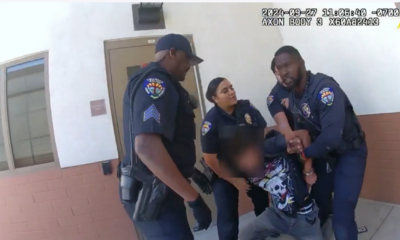arizona
Navigating the Budget Storm: Local Governments Face Uncertainty Ahead

Local governments in Tucson and Pima County are gearing up for considerable challenges as they prepare their budgets for the 2025-26 fiscal year. The uncertainty surrounding national economic conditions is making revenue predictions difficult, forcing officials to navigate through a complex landscape.
Tucson and Pima County are slated to present their proposed spending plans next week, with final votes expected in June. Compounding the situation, trade wars and tariffs have rendered forecasting income a highly speculative endeavor. Both local governments recognize they must adopt a strategic approach similar to that recently undertaken by United Airlines, which released two separate earnings projections—one reflecting current economic strains and another contingent on potential political changes.
Concerns about the broader economic climate are palpable. Local leaders are acutely aware that shifts in federal policies could significantly impact their budgets. The possibility of a trade war looms over Tucson and could exacerbate existing economic vulnerabilities. If reactions to national politics lead to a downturn, local leaders must consider the implications for funding essential services.
“We are deeply concerned about falling back into another foreclosure moment in our community,” said Supervisor Jennifer Allen, highlighting the urgency of the situation. The anticipated cuts are not merely theoretical, as local governments lack the flexibility to raise additional revenue amid economic downturns.
During a recent meeting, the Pima County Board of Supervisors considered both their financial outlook and key priorities. Encouragingly, state shared sales tax revenues are on the rise, pushing the county’s projected year-end fund balance to $137.1 million. However, the optimistic forecasts were quickly tempered by warnings of a challenging economic outlook marked by inflation, housing instability, and reduced consumer confidence.
As local officials deliberate on budget priorities, the need for balance is paramount. Mayor Regina Romero emphasized the necessity of making “very difficult decisions” while maintaining strategic investments. However, a lack of consensus among residents regarding funding priorities complicates matters. “No one resident can dictate what the mayor and Council should do,” Romero stated.
In addition to specific initiatives, the city is confronting a $27 million revenue loss linked to a flat income tax that was approved in 2022. Romero noted the negative effects the Trump tariffs have already caused, as spending has decreased, pushing sales tax revenues downward.
Despite the challenges, Tucson’s City Council is, as ever, keen on addressing critical needs, including public safety and housing. The proposed funding for these programs reflects a commitment to long-term community well-being while also acknowledging the precarious nature of the local economy.
Moreover, the reliance on sales taxes makes Tucson’s budget especially susceptible to fluctuations. Sales taxes can diminish rapidly, while property taxes, governed by state limitations on assessed value increases, offer somewhat more stability. Yet, county officials are also mindful of the broader economic storms that could impact revenue streams.
As Tucson and Pima County strive to chart their course through uncertain waters, local leaders from past economic downturns remind the new officials of the potential financial crises they may face. Planning for worse-case scenarios has never been more essential, especially in light of past experiences where municipalities saw their budgets severely strained amid economic downturns.


















